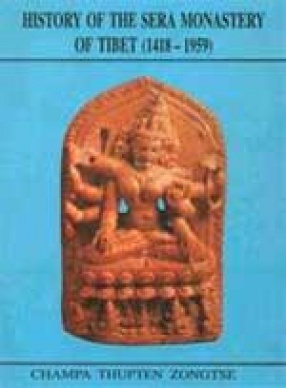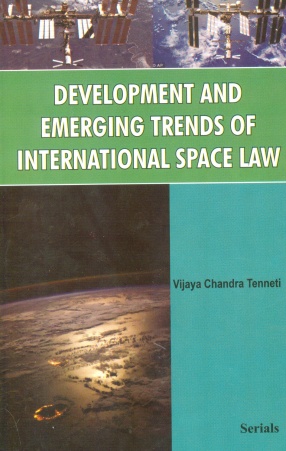The present book is dedicated to the history of Sera, along with Ganden and Drepung one of the three great monastic universities of the dGe-lugs-pa school around Lhasa. With the support of the donor sNe’u-gdon Mi-dban Grags-pa-rgyal-mtshan, it was founded in 1419 by Byams-chen-chos-rje Sakya-ye-ses (1354-1435), one of the disciples of Tson-kha-pa Blo-bzan-grags-pa. Byams-chen-chos-rje himself became its first abbot. Before he accepted the invitation of the Chinese emperor Yung-lo to travel to Peking in 1421, he appointed Chos-rje Dar-rgyas-bzan-po as his successor. Including the 4th Pan-chen Bla-ma Blo-bzan-chos-kyi-rgyal-mtshan (1570-1662), a total of seventeen scholars succeeded to this position up until the middle of the seventeenth century. Beginning with the 5th Dalai Lama Nag-dban-blo-bzan-rgya-mtsho (1617-1682), however, the Dalai Lamas came to be regarded as the abbots of the monastery. At times, Sera counted four different faculties. Only three of them have survived, namely two of the sutra faculties (Se-ra-byes and Se-ra-smad) and the tantra faculty (sNags-pa-grva-tshan) founded by Lha-bzan Khan (d. 1717). A complete course of study at one of the sutra faculties took about thirty years, and it was concluded with the conferring of the title of dGe-bses-lha-rams-pa or a similar degree. Like Ganden and Drepung, Sera has been the alma mater of many renowned scholars and influential hierarchs of the dGe-lugs-pa school, among them a considerable number of dGa’-ldan-khri-pas and the regents of the Tshe-smon-glin and Rva-sgren incarnation lines. In the years before the Chinese invasion, the total number of monks housed in Sera is estimated to have been about seven thousand. Between 1952 and 1956, Zongtse Rinpoche was himself one of them; he spent about four years at Byes-pa-grva-tshan, studying especially Tshad-ma (Pramana), Phar-phyin (Prajnapararmita) and dBu-ma (Madhyamaka). Accordingly, his presentation is not merely confined to a treatment of the history of the monastery, its sacred objects and its famous scholars, but also includes a description of the course of study and of the degrees offered. After the flight of the Dalai Lama in 1959, the monastery was practically closed down, and, during the Cultural Revolution, it was partly destroyed. It is to be hoped that Zongtse Rinpoche’s book will prove helpful and support the efforts in preserving everything that is worthwhile in this tradition. To benefit the Western reader, an extensive index has been added.
History of the Sera Monastery of Tibet, 1418-1954
$55.80
$62.00
In stock
Free & Quick Delivery Worldwide
All orders amounting to US$ 50 or more qualify for Free Delivery Worldwide. For orders less than US$ 50, we offer Standard Delivery at $14 per book.
ABOUT THE AUTHOR Champa Thupten Zongtse
Champa Thupten Zongtse (Byams-pa Thub-bstan rDzon-rtse), the author of this book, was born in 1933 in Western Tibet. At the age of five, he entered the monastery of dGa'-ldan-phun-tshogs-glin, having been recognized as the reincarnation of the previous rDzon-rtse Rin-po-che. For several years he studied at the monastic universities of Tashilhunpo and Sera, finally taking the degree of dKa' -chen according to the tradition of Tashilhunpo in Phun-tshogs-glin in 1958. Thus, he belongs to the ever-smaller number of Tibetan monk-scholars who knew Tibet before Chinese rule and who still received their religious education entirely in the traditional form. In 1967, H.H. the Dalai Lama sent Zongtse Rinpoche to Switzerland as a member of the newly founded Tibetan Monastic Institute of Rikon near Zurich. One year later he came to the Institute for Indian Studies at the University of Gottingen in Germany, originally on a short-term lectureship in Tibetan. However, due to the continuous efforts of Professor Heinz Bechert, director of the Institute, who spared no pains in establishing Tibetology as a full-fledged subject, it eventually became possible to create a permanent lectureship in Tibetan Language and Literature at the University of Gottingen. In this way Zongtse Rinpoche found the necessary time and suitable surroundings for his personal way of contributing to the preservation of his cultural heritage. Motivated by the emotional links and personal experience of an eyewitness, he has chosen to write on the history of those monasteries in which he received his education, presenting his material in the traditional form of religious history (Chos-'byun). Since 1977, he has published two books in this field. The first is a history of his home monastery dGa'-ldan-phun-tshogs-glin in Western Tibet, founded in 1615 by the famous Taranatha, and the second is a similar work on Tashilhunpo, the well-known seat of the Panchen Lamas. Another book, namely a short history of Srad-rgyud-dga'-ldan-pho-bran, the oldest Tantric college of the Gelugpa school, is to appear in the series of the Library of Tibetan Works and Archives in Dharamsala.
reviews
0 in total
Review by Anonymous
Be the first to review “History of the Sera Monastery of Tibet, 1418-1954” Cancel reply
You must be logged in to post a review.
Bibliographic information
Title
History of the Sera Monastery of Tibet, 1418-1954
Author
Edition
1st ed.
Publisher
ISBN
8186471006
Length
xxvi+658p., Plates; Bibliography; Index; 30cm.
Subjects
tags
#Tibetsimilar bookssee more
Aims of Education
$40.50
$45.00





There are no reviews yet.